The two main things that make up a photograph are a subject and a background. There are many LEGO sets that provide a subject. Most of them do, actually. Fewer provide a background as well. This is the thinking that got me interested in the Creator Expert line of LEGO models. The story potential of the Detective’s Office got my immediate attention.
There are many sets in Creator Expert series including, among other things, a 1950s Diner (reviewed here), a french bistro, and a bank.
Despite being on the market for several years, I have only recently gotten my hands on this set. So I present to you my review of one of these versatile sets: the Detective’s Office.
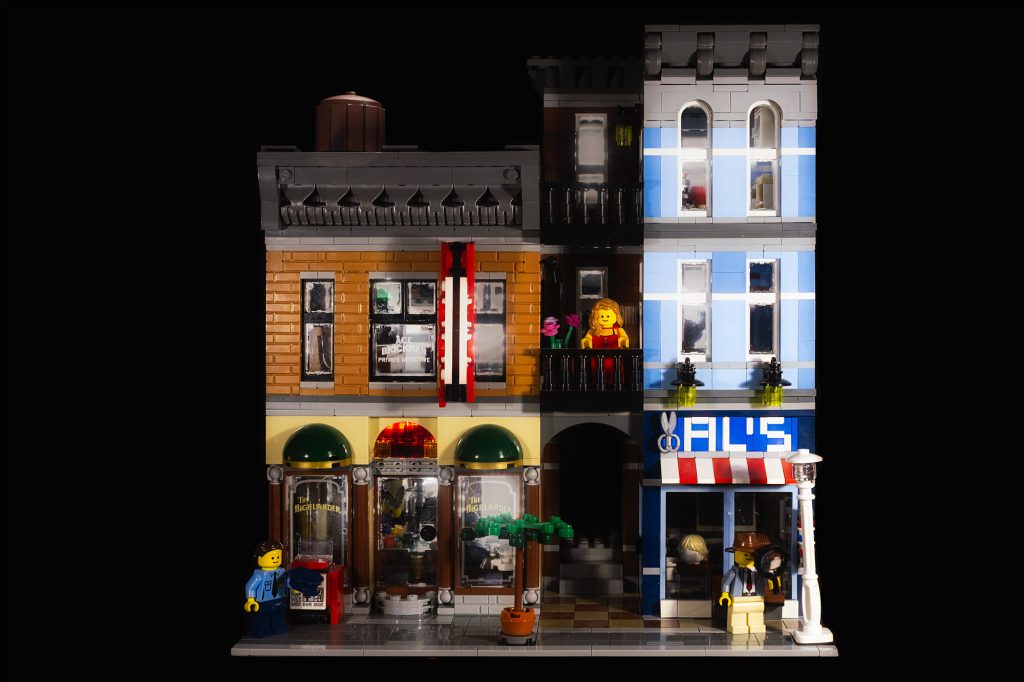
The Detective’s Office
The Build
The Detective’s Office is very detailed, and as a result the build is very complex. The Detective’s Office has 2292 pieces. It took me over 5 hours to build, and I learned a lot of new and interesting techniques along the way. However these builds are not for the faint of heart. The sets are rated for 16+, and there is a reason. It is not uncommon for a single step in the build process to use 50+ pieces in one go. I have personally never seen a more complex build that the Creator Expert sets, and this one is no exception.
However the reward is getting a masterpiece of LEGO design that contains a lot of details both inside and out.
The building is a 3 story building with early 20th century architecture. The bottom floor contains a pool hall, and a barber shop. The second floor contains the detective’s office, and an apartment. The top floor contains a small bakery.
The roof is removable to access the top floor, and each subsequent floor, is accessible by removing the floor above it. This makes the entire building easily accessible. Which is fortunate as the details are incredible.
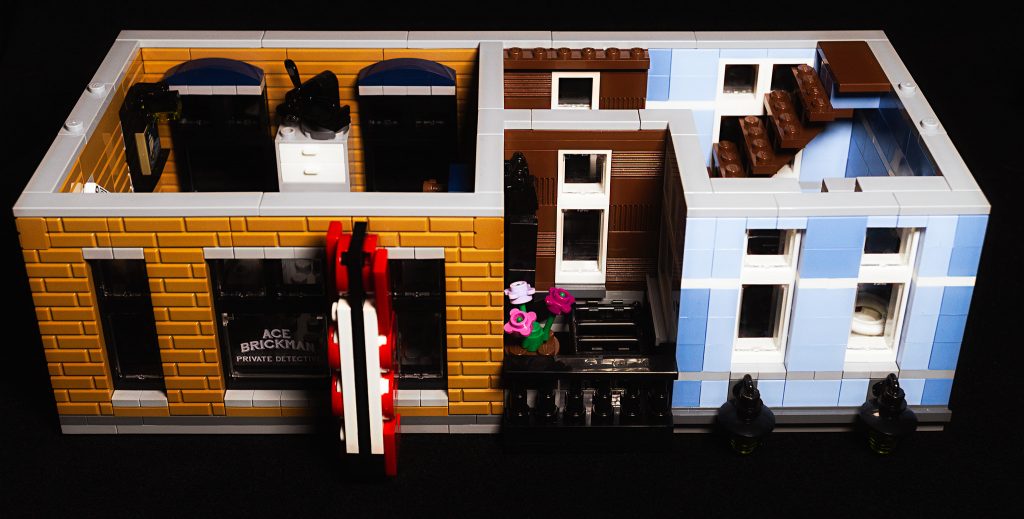
Each floor, like this second floor, is removable, giving access to the floors below it.
The Detective’s Story
The thing I really love about The Detective’s Office is that there is a story built into the set, and that story is told through the details.
The story is set during Prohibition, except, being LEGO, the item prohibited isn’t alcohol, but the more kid friendly contraband: cookies. The pool hall is selling these nefarious cookies, and the Detective’s mission is to track down the source of the illegal baked good.
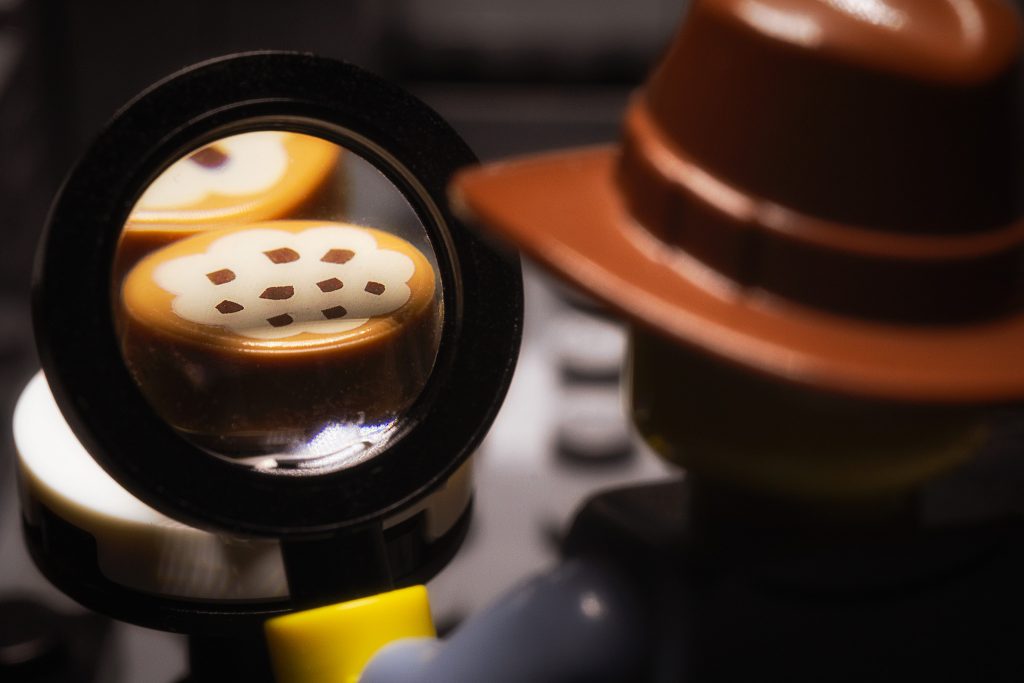
Detective exploring cookie clues.
What the Detective doesn’t know is that the cookies are being made on the top floor, right above his office. Smugglers move the cookies thru a trap door in the back of the barber shop, and into the pool hall via a secret passage. Fun right?
The Details
The front of the building sports a lot of interesting details that make the building an excellent background for photography. The pool hall windows have the name of the place on them, in an old English style. The barber shop has some wigs in its large front window.
The second floor sports a large vertical Pool sign, and a balcony where a minifigure can stand.
The back of the building has that secret entrance for smuggling in contraband, and a garbage pail.
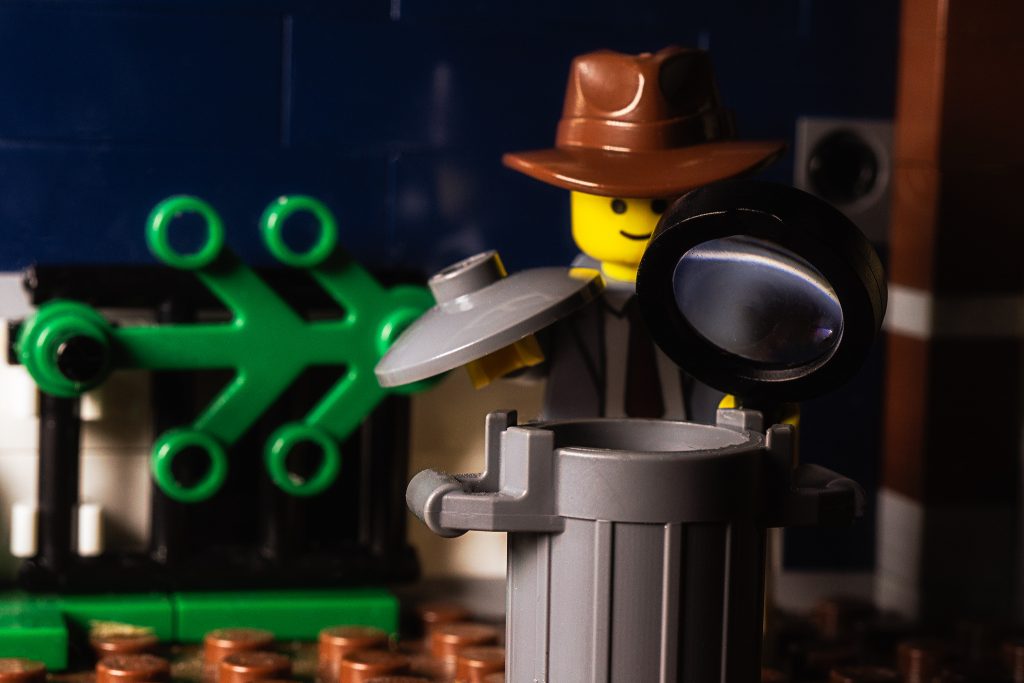
Detective looking for clues in the garbage, oblivious to the secret passage behind him.
Inside each room are an incredible amount of details, some not visible unless the model is explored. The pool hall has a pool table, complete with balls, and a rack to store the cues. It has an overhead fan, and a dart board. It even has a trophy case, and a secret door right below it to allow the cookies to secretly enter the establishment.
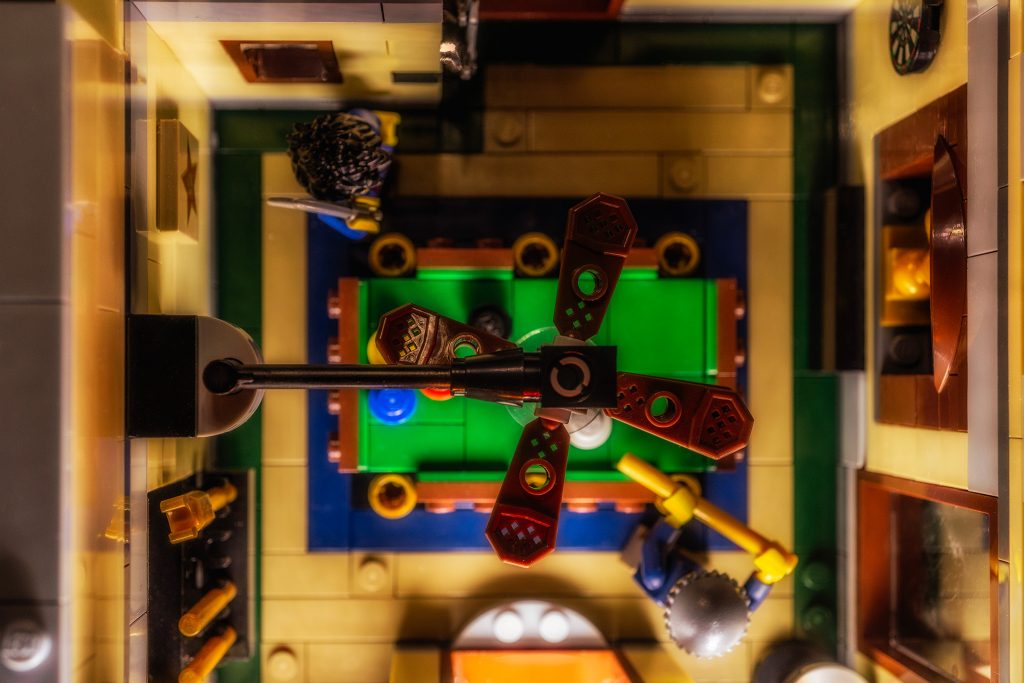
Over head view of the pool hall.
The barber shop has a barber chair, and a mirror – an actual reflective mirror – which is something I’ve personally never seen in my 43 years as a LEGO aficionado (tho I am told there have been mirror-like stickers used in some sets, however they are rare and therefore noteworthy). There are also wigs in the window, and a place to store a pair of scissors and cleaning supplies.
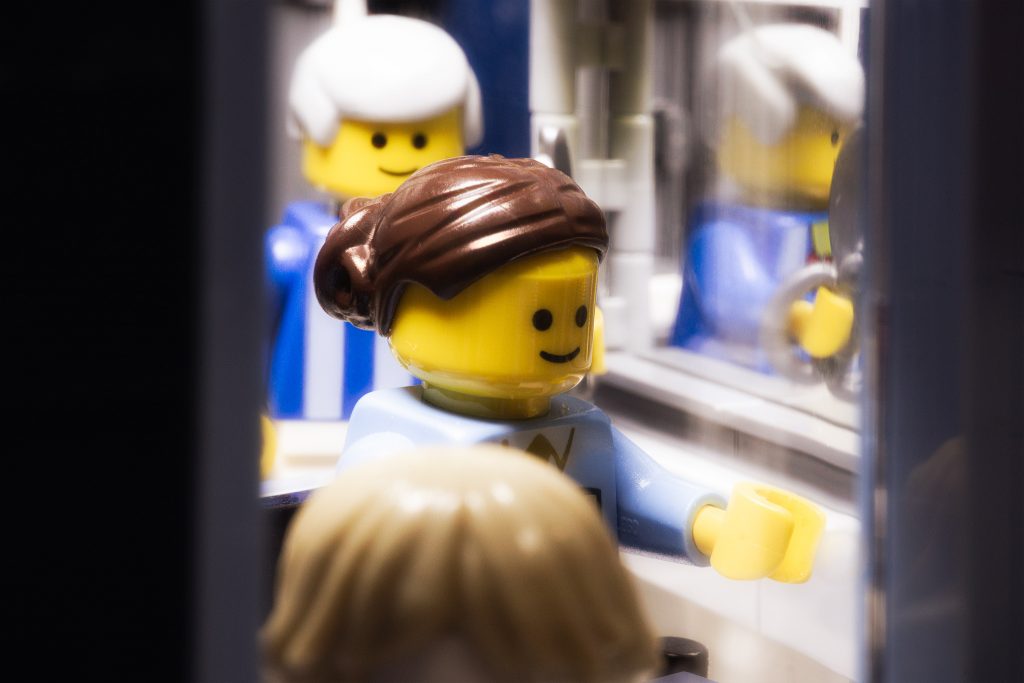
A view of the barber shop including that unique mirror feature.
The detective’s office has a desk, with clues strewn about, a desk fan, and a hat rack. It has a very strong film noir vibe to it. There is also a secret safe behind a moveable picture, which contains a secret letter. There is more documents in the filing cabinet.
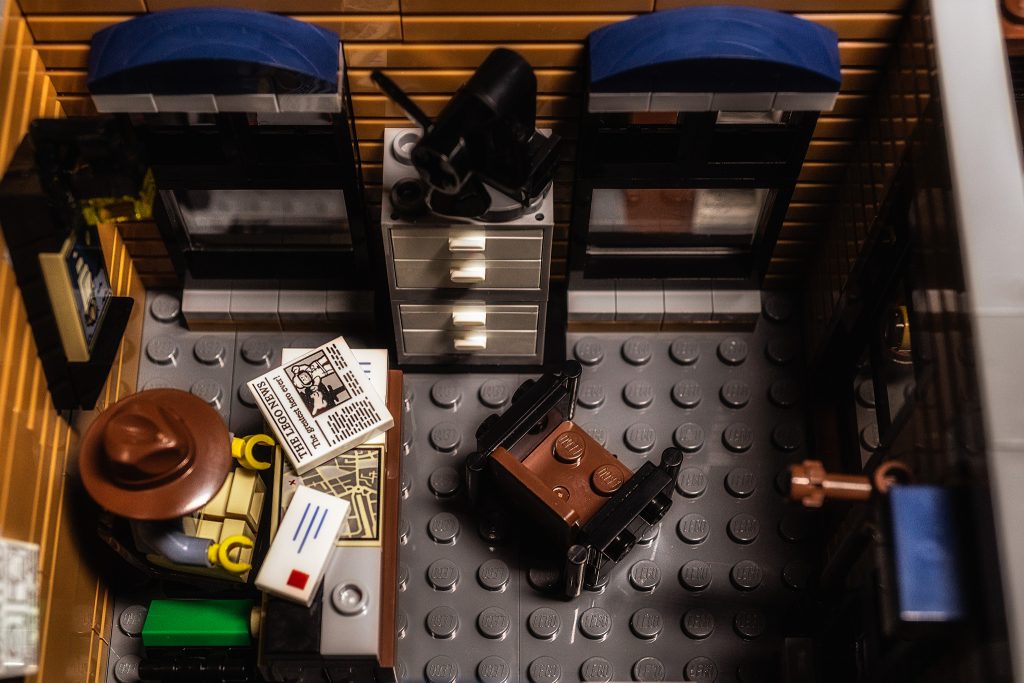
Over head view of the detective’s office.
The top floor contains the bakery, including a stove and fridge. It also sports a patio with a New York City style water tower, and a sky light, so the criminals can peak in on the Detective.
Photography
As much as I love these sets for their creative build, and high amount of detail, I am less excited about them from their usefulness in toy photography. While the outsides are beautiful and make excellent backgrounds potential, my main issue is with the interiors of the buildings.
The interiors of the building are very small, so it is very hard to get a camera to get a good view of the interiors to be able to frame a scene effectively. A photographer would either need to dismantle a wall, or shoot thru a window, dramatically cutting down on the variety of shots that can be made.
I think it is important to note that LEGO seems to be improving their builds to be more photography friendly. James Garcia didn’t seem to have many problems photographing the interior of the latest model in the series (The Diner, reviewed here in this very blog). However for this set you need to be willing to break down some walls to get the good shots. Not the end of the world, but a constraint that is worth noting.
So I can’t really recommend this set, or any in the series, as being worth the money for interior shots. While I have seem some good work from other using this exact set, the versatility isn’t there for me. One would have to spend a lot of time dismantling the set to get different views to make the interiors worth while. Some may find that tolerable, but personally it is a little too much for me.
The interiors do make great places for kids to play in. My kids have spent hours doing just that. They just don’t work on a photographic level due to inaccessibility.
However the interiors lack of accessibility is a small matter compared to the outside. The real value from a photography perspective for this model is the exteriors. This building can be used as a backdrop for any story based in a city, and shot from many angles.
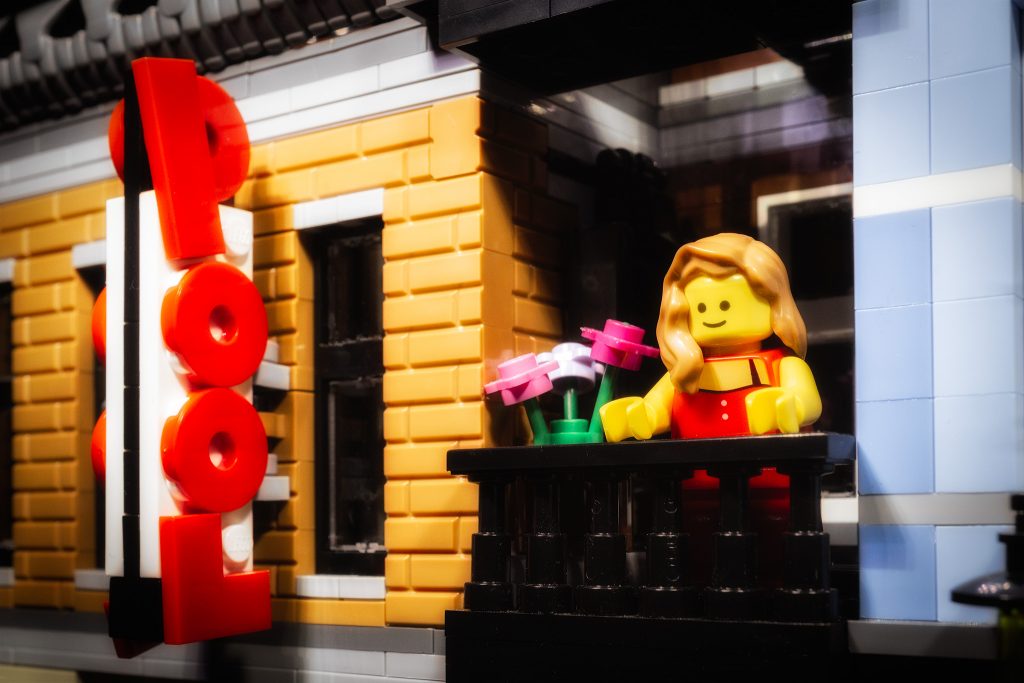
A lady out on the balcony on the second floor, beside the pool sign
The Minifigs
While it’s hard to tell the vintage of the set from the building itself, the minifigs are a dead giveaway. LEGO has really stepped up their minifig game in the past few years, especially in the design of the faces. Sadly this set predates those improvements.
Multiple minifigs are included: a couple pool sharks, a barber, a detective, a damsel in distress, and a police officer. Each one has that simple classic head with two dots for eyes, and a curve for a mouth. Apparently, until The Diner was released, LEGO intentionally used the older style faces for this set. While this can bring out a nostalgic vibe I personally find that the faces don’t give any love to the lens. I desperately want to swap them out for newer ones with more expressions.
Conclusion
This set is a very complex build, and its value is also complex. It is an excellent example of the best of what is possible with LEGO models. Builders will revel in how creatively it is assembled, and in its thoughtful details. The minifigs are a disappointment, but the shelf appeal and playability are off the charts.
As a prop for toy photographers, the story is equally complex. The interiors are hard to get access to, but the exteriors make wonderful backdrops. If you are going to get this set for photography purposes, get it for the potential of the exteriors.
Really, you should get several of the sets in this series and make yourself a whole block of buildings. That is where the true magic of this set is – as a small landmark in a larger town.
[Dave]
Do you want a Creative Expert modular building of your own? You are in luck! toyphotographers.com is holding a giveaway for the latest set, The Diner. Get all the details on how to enter by clicking here.


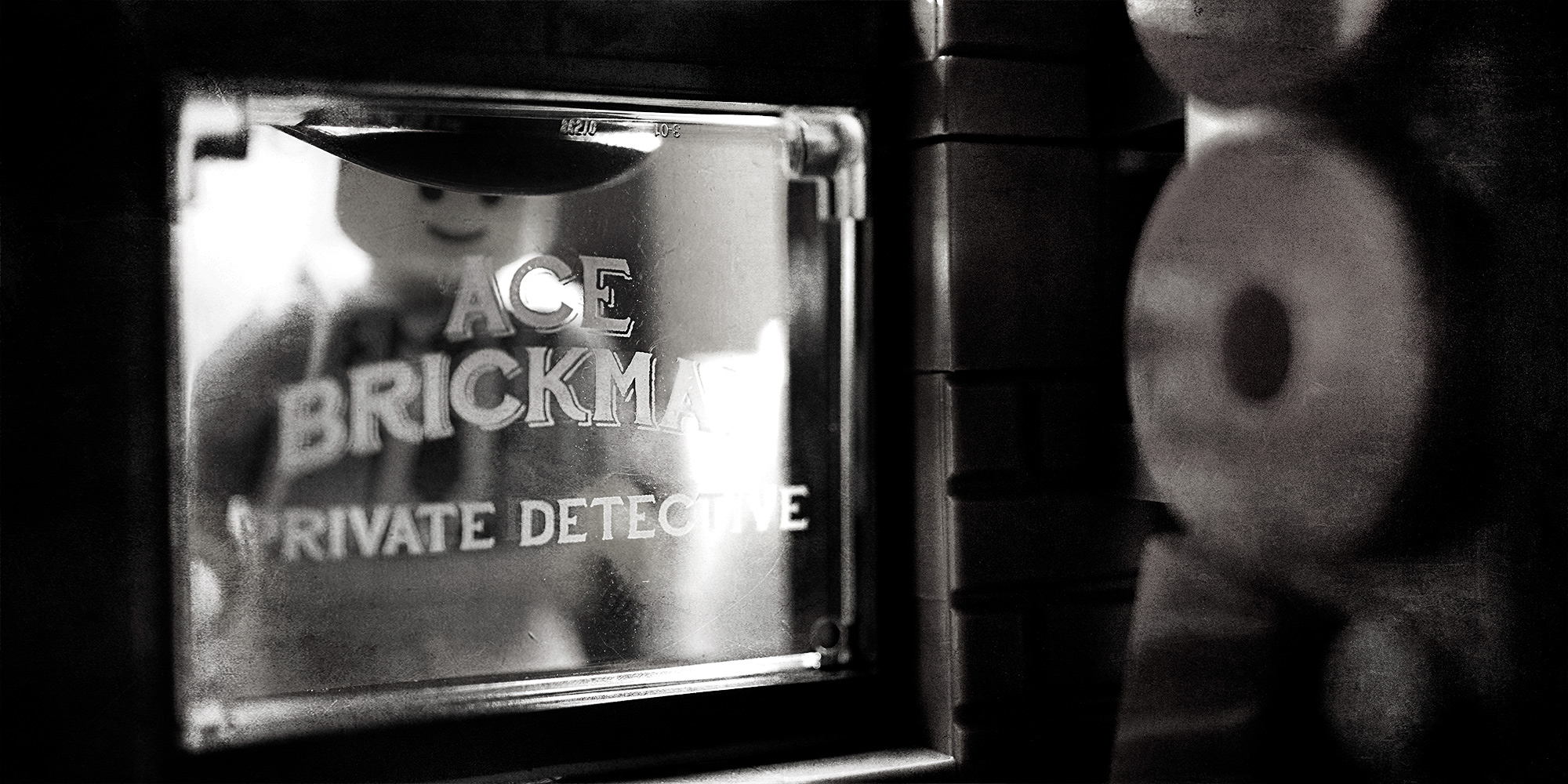
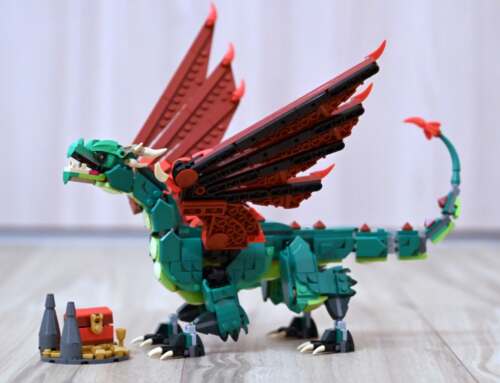


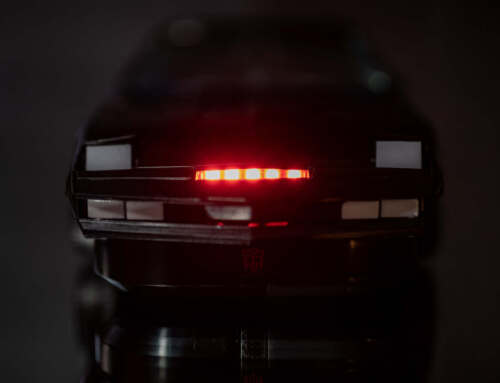
I love this set! The play-ability is outstanding, as is the cheeky twist in the prohibition story line.
I still struggle to shoot with these builds though. There’s so much detail inside the builds, but it’s always a battle to get a decent shot/angle. Although the exteriors, as you point out, do make a great backdrop for shots.
Yeah, the interiors are great, but hard to shoot.
One thing I forgot to mention, and I haven’t seen it in any review, is that one can use the upper stories as backgrounds, if the camera is angled in the right way.
For example, the shots from my recent Six Image Narrative: http://blog.studiodave.ca/2018/04/six-image-narrative-superhero-edition.html, the foreground building is the bottom of the Diner, the background is the top two stories of that diner. It allows for a more varied background 🙂
Great review Dave!
I have a bunch of modulars, but I tend not to photograph them (they are all actually stored in boxes in the loft currently!) Like you, I found them very hard to photograph inside. One day I’d like to learn enough about building to work out how to make them open like the haunted house and the Ghostbusters Firehouse so I can quickly open them up for photography rather than have to rebuild them! 🙂
Thanks Lizzi
If you find a way to easily open em, please share 🙂